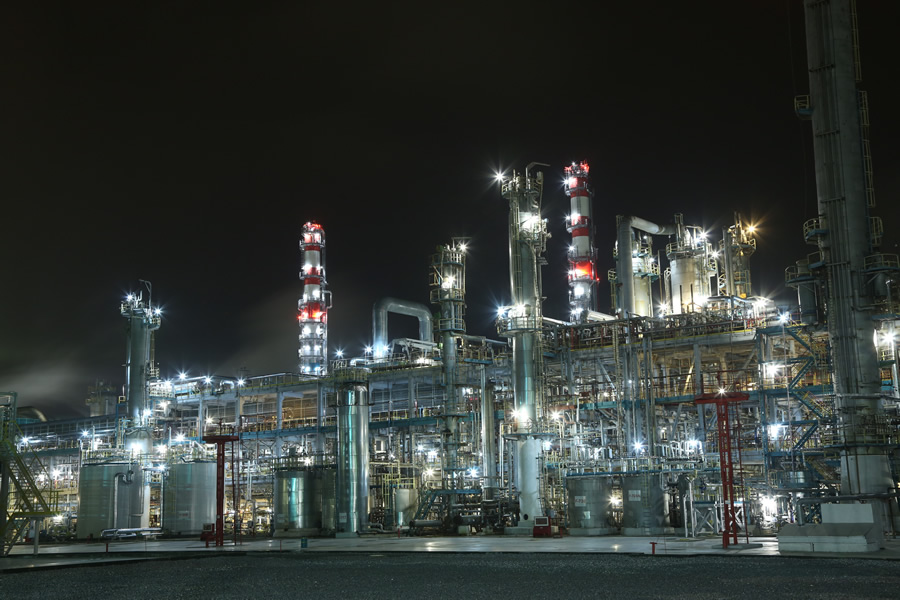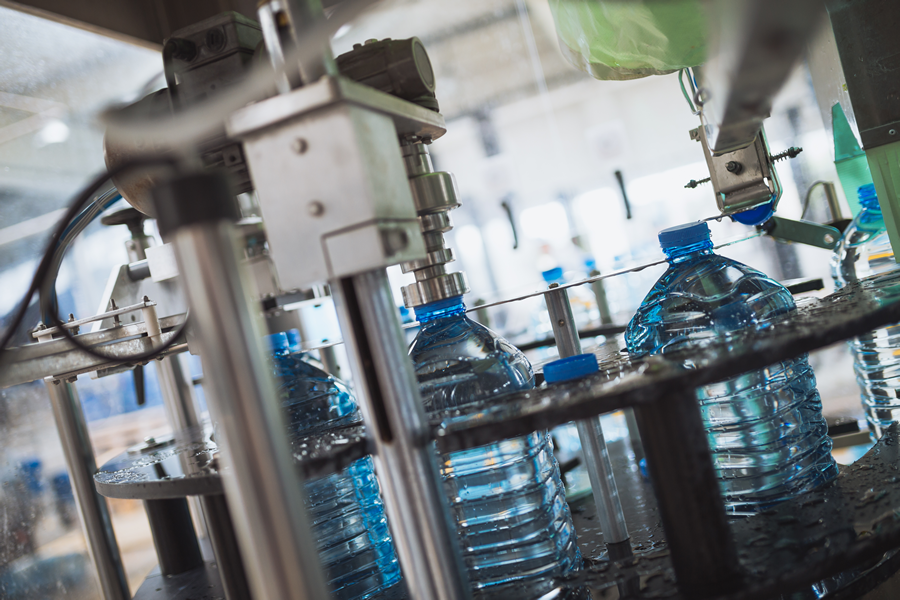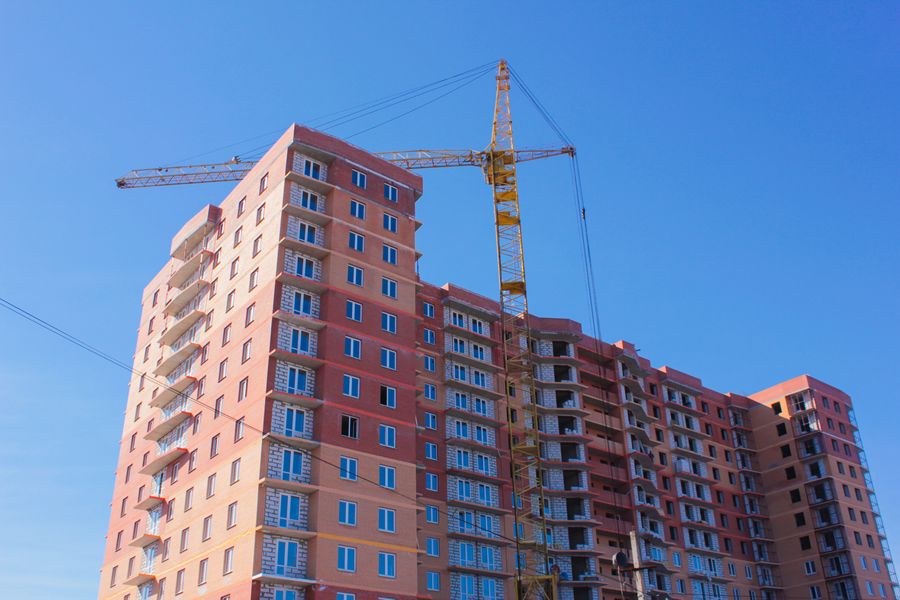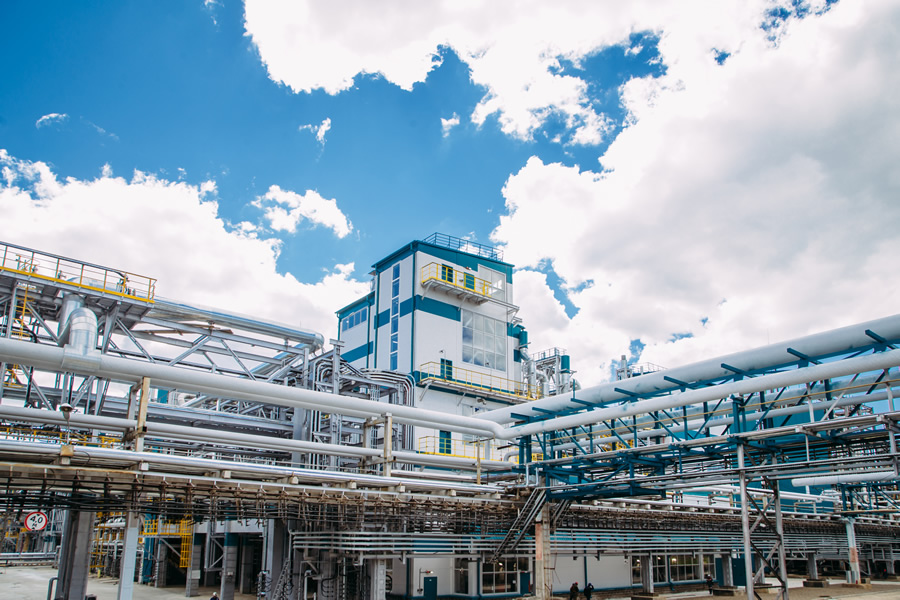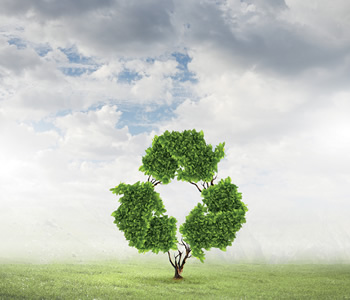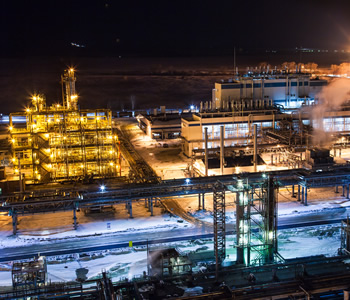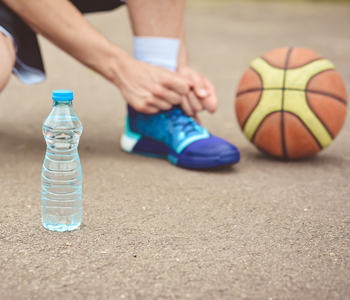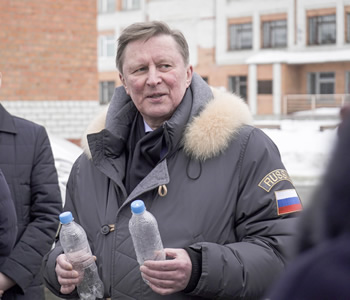In 2016, SIBUR produced 445,000 tonnes of rubbers, up 8.6% y-o-y. The domestic market expanded by 7–8%, in large part thanks to the production ramp-up by tyre manufacturers and the “reanimated” industrial rubber products segment.
SIBUR has made a review of its 2016 performance recently. What did the year bring for the Plastics, Elastomers and Organic Synthesis Division?
It was a good year for the Company as a whole and for our Division in particular, with sales and production volumes having increased virtually across all our business segments.
The key driver of our performance last year was the stabilisation of the Russian market. The majority of the Plastics, Elastomers and Organic Synthesis Division’s output is sold to Russian consumers, and we can see a good trend here.
For example, last year butyl acrylate consumption in Russia increased by as much as 26% as a result of our consumers' focus on developing new dispersion grades and expanding production capacities.
Another major factor was the rubber market’s revival in 2016, which can be attributed not only to the moderately favourable market environment, but also to the management’s active efforts aimed to increase sales and production volumes. In 2016, SIBUR produced 445,000 tonnes of rubbers, up 8.6% y-o-y. The domestic market expanded by 7–8%, in large part thanks to the production ramp-up by tyre manufacturers and the “reanimated” industrial rubber products segment.
The global market situation is quite favourable – the regions which used to be quite poor for the rubber business are now viable consumers. We expect the growth to continue into 2017.
What are the fundamental reasons for the changes in the rubber market?
It is a combination of various factors. For one, in China there was a significant surge in demand for cars, which led to increased tyre production.
In addition, there was a shift in the natural rubber market. About a year ago, the producers came together to regulate the volumes they shipped to the market, reserving some as inventories where necessary. This put a stop to the drop in prices. In early 2016, the natural rubber price was c. USD 1,090 per tonne, and at the end of the year it increased to USD 1,900 per tonne. In 2017, it further grew to USD 2,300 per tonne due to a series of floods in Southeast Asia.
A series of floods in Southeast Asia drove the prices for natural rubber up.
In 2011, at the time when SIBUR bought its acrylates business, the total volume of the Russian market did not exceed 10,000 tonnes. Thanks to the joint efforts of SIBUR and its clients, the market has been expanded to 34,000 tonnes, and we expect the consumption to reach 40,000 tonnes in 2017.
In Europe, the price of butadiene doubled: it was USD 850 per tonne in early 2016, and now it goes as high as USD 1,750 per tonne. At one point, the prices in China reached USD 3,000 per tonne.
The rubber market is interesting in that it never stops expanding: the global market grows by 1–3% annually.
What about the Russian market – what caused its revival?
The market grew by around 30,000 tonnes thanks to increased demand for “secondary tyres”. Those tyre manufacturers that managed to gain a foothold in Russia are now reaping the benefits of their investment decisions.
You have mentioned industrial rubber products; what are some of the notable projects in this segment?
We are currently developing a programme for interaction with the industrial rubber products segment. The market is full of Asian products of various price categories – it but makes sense for us to contribute to their substitution.
The production of conveyor belts and hoses is also booming, and SIBUR may look into deepening the cooperation with the players in this area.
What was the year like for the acrylates market?
As I have mentioned, the consumption of acrylates went up by 25% to 34,000 tonnes, and our sales volumes increased by 40%. SIBUR currently accounts for a significant share of the total butyl acrylate supplies in the domestic market.
In 2011, at the time when SIBUR bought its acrylates business, the total volume of the Russian market did not exceed 10,000 tonnes. Thanks to the joint efforts of SIBUR and its clients, the market has been expanded to 34,000 tonnes, and we expect the consumption to reach 40,000 tonnes in 2017.
Russia imports large volumes of acrylic products: dispersions, paints, glues, etc. In a way, this lays a foundation for feedstock suppliers and producers: we can increase operating rates, while they get an opportunity to implement new investment projects.
We are definitely interested in strengthening our position in this market by offering new product solutions. In October 2016, the Dzerzhinsk production site of SIBUR-Neftekhim launched the production of 2-Ethylhexyl acrylate, which may find application in the Russian market in the production of special value-added dispersion grades.
In October 2016, the Dzerzhinsk site launched the production of 2-Ethylhexyl acrylate.
SIBUR is determined to create the most favourable conditions for MAN processing in Russia by helping to ensure efficient allocation of production facilities and implementing other measures. Part of the output will be exported to Europe. A number of consumers and distributors have already indicated their interest in SIBUR’s MAN, which will be produced from butane using a modern technology.
Do you see any export potential for the acrylates production?
We still export butyl acrylate “leftovers” to Europe. The domestic market is a priority for us, and we are committed to promotion of the manufacturing of acrylic products in the country. This year, we would have been able to supply 100% of our acrylates output to the domestic market, were it not for the commissioning of the Gazprom neftekhim Salavat production.
Was it not Gazprom neftekhim Salavat’s plan to export acrylates? It did register under the REACH Regulation for this purpose...
Yes, Gazprom neftekhim Salavat will be exporting acrylates, there is no doubt about it. They will have to, because even in the best-case scenario the Russian market will consume around 40,000 tonnes in 2017, while their capacity is 80,000 tonnes. Factor in our volumes, and you get 120,000 tonnes – thrice the size of the current demand.
What changes were there in the polyethylene terephthalate (PET) business during the past year?
There was a sizeable increase in PET operations of almost 70,000 tonnes. The domestic granulate consumption grew by 13% to 615,000 tonnes. This put us at the pre-crisis level of 2013–2014.
Last year, we saw growth across all PET-consuming segments, especially in the production of bottles and containers for food, beverages, and perfumes. People started buying more as a result of the import substitution policy.
PET prices in 2016 were relatively stable, driven by the market balance, supply and demand dynamics, and supply volume of Asian producers, as imports were a major source of the product in 2016. PET prices remain low, making it the most attractive material for manufacturing food packaging. How do you think the restrictive measures for alcoholic beverages will affect the PET market?
It is still too early to tell – the situation will become clearer between 2017 and 2018. The actual date when the restrictive measures banning the packaging of 1.5 litre or more for alcoholic beverages took effect was 1 January, but they will only be implemented starting fr om 1 July. Even if the consumption of PET for alcoholic beverages ends up decreasing, the growth in other segments (primarily packaging for water and dairy products) will continue.
PET is the most competitive material for manufacturing food packaging.
Last year, the Company hit its record in thermoplastic elastomers production – 73,000 tonnes. We are fully confident in the quality of our product, which is why we are operating almost at full capacity. In 2017, we will shoot for even higher volumes.
Given the positive trend that you are observing in the PET market, are there any plans to ramp up the production in Blagoveshchensk?
Not in respect of PET, but we do consider the possibility when it comes to the terephthalic acid. We could reconstruct POLIEF's terephthalic acid capacities, which will be considered by the investment committee in 2017.
I must stress that while we do have the technology framework in place for ramping up the terephthalic acid production, it does not necessarily imply economic viability.
What do you think has been the catalyst for the resumed activity of a number of bottle PET productions?
The existing capacities in the Customs Union countries fully cover the domestic demand for bottle PET grades. As far as I am concerned – there is no need for additional volumes. The Senege, Alco-Naphtha, and Mogilevkhimvolokno plants are working at partial capacity. It may be that our colleagues running these production projects are looking to achieve complete import substitution.
What are the Company’s plans in respect of the polystyrene segment? Do you expect any new projects down the line?
As of today – no, we do not. In 2015, the thermal insulation market shrank by 15–18%, declining a further 10% in 2016. The silver lining was the EPS share, which remained flat in a shrinking market.
The construction industry remains the key polymer insulation consumer: despite the declining trend, houses are still being built and commissioned. We also see potential demand in the private construction segment.
In 2017, we expect the polystyrene consumption to remain flat year-on-year, given the somewhat subsided hysteria around the economic situation, and the resumed repairs of households.
For example, the demand for polymer insulation in the 30,000-tonne Ukrainian market is growing largely thanks to house owners. The EPS demand remains stable and flat year-on-year, although the market got less attractive for us after the protective tariff that took effect on 1 January 2016.
The construction industry remains the key polymer insulation consumer.
Do you see any prospects in Belarus or Kazakhstan?
We see some. Both markets are relatively small, with Kazakhstan consuming around 7,000 tonnes EPS, and Belarus – 11,000 tonnes. These markets are in large part connected to the Russian market, which is why they display similar, if delayed, negative trends. Considering the decline in construction, they have fallen on some hard times. Still, the export volumes to these countries remain flat year-on-year.
Do you have any ideas on stimulating the demand for EPS?
Higher demand may be achieved by stimulating the consumption of finished EPS products, such as expandable polystyrene blocks for groundwork in road construction. However, that field is still going through some troubles, as seen in the geosynthetics and polymer-bitumen binders segments. There is currently active growth in private construction, where they are building houses fr om structural insulated panels with the core made of expanded polystyrene foam. I think that we cannot expect any drastic changes before we move on to life cycle contracts at all construction sites.
Another area for development is polystyrene packaging. We can see rapid localisation of household appliance manufacturers, which are generally in the market for quality polystyrene packaging. This is a promising segment that is held back by its small capacity.
In any case, polystyrene is used for manufacturing polymer insulation, which in turn is used in construction. However, at the moment that industry lacks fundamental growth drivers.
The domestic market is a priority for us, and we are committed to promotion of the manufacturing of acrylic products in the country.
You have mentioned the polymer-bitumen binders segment, what is its current state?
The demand for polymer-bitumen binders in the road construction industry has increased by a negligible 1,000 tonnes over the year. The key market players here are Gazprom Neft and Rosneft – the presence of these juggernauts gives hope for a possible turn of the tide. Roads cannot be built using bitum only, you always need polymer-bitumen binders.
The last one in this series of construction-related questions – how is the thermoplastic elastomers business progressing?
Last year, the Company hit its record in thermoplastic elastomers production – 73,000 tonnes. We are fully confident in the quality of our product, which is why we are operating almost at full capacity. In 2017, we will shoot for even higher volumes.
The demand for thermoplastic elastomers greatly depends on the season: it is either supplied to the domestic market, or stored, or exported to countries with a southern climate. We have already launched the seasonal storage programme. Last year, the Russian thermoplastic elastomers market increased by 7%, mainly driven by the roofing and compound segment.
Does that mean that polymer insulation is stagnating, while roofing is on the rise?
Indeed. Bituminous waterproofing and shingle are gradually phased out as the repairs market is expanding. You can postpone repairs on the façade, but the roof cannot wait. The consumption of thermoplastic elastomers for roofing has increased by 2,000 tonnes, with the overall segment capacity of 26,000 tonnes.
Now, let us talk about SIBUR’s new projects. What are the goals of the Plastics, Elastomers and Organic Synthesis Division associated with the construction of ZapSibNeftekhim?
ZapSibNeftekhim is projected to produce 100,000 tonnes of butadiene, which can be considered a secondary product. Our job was to monetise this feedstock, and we have already found a solution. Once it passes all the stages of internal review and approval, we will inform the market.
Is the maleic anhydride production also a means of monetising secondary feedstock?
Indeed it is, MAN is a good example of how the production chain may be extended. We have the feedstock and the technology to launch a new production. The capacity of the facilities to be built under the project is 45,000 tonnes. For the past five years, the average annual rate of increase in the consumption of MAN was 12%, having reached around 5,000 tonnes a year. Our plan here echoes the butyl acrylate situation: we will be exporting the product while at the same time stimulating the domestic demand.
Right now, MAN is imported to Russia as part of the finished unsaturated polyester resins, which are used to manufacture electric appliance cases, medical products, floor tiles, etc.
We expect the localisation of the MAN production to yield a 10% annual rate of increase in consumption.
SIBUR is determined to create the most favourable conditions for MAN processing in Russia by helping to ensure efficient allocation of production facilities and implementing other measures. Part of the output will be exported to Europe. A number of consumers and distributors have already indicated their interest in SIBUR’s MAN, which will be produced from butane using a modern technology.
The Import Substitution Plan for the Chemical Industry of the Ministry of Industry and Trade lists a MAN production, is it SIBUR's project?
Possibly. I think that each product item of the Plan has several designated companies, and whichever completes its facilities first will get to substitute the imports.
The Ministry’s document also mentions a plasticiser production project to be implemented by SIBUR.
We are considering a launch of a dioctyl terephthalate (DOTP) production at our Perm site with a capacity of 100,000 tonnes a year. The final decision may be taken in the near future. The raw materials for the new production will be terephthalic acid and 2-ethylhexanol, which are already produced by SIBUR. DOTP is a phthalate-free plasticiser, which makes it an environmentally friendly and safe alternative of dioctyl phthalate.
We estimate the Russian market of common plasticisers to face a shortage of about 60,000 tonnes a year, which is covered with supplies from Europe. This project will substitute a large part of alternative product imports and enable plasticiser supplies to export markets, wh ere the demand for DOTP is also rapidly growing.
In June, SIBUR decided to build a new 100 ktpa facility producing dioctyl terephthalate (DOTP) at its Perm site.
What is the status of RusPAV, SIBUR’s other speciality chemicals project?
RusPAV is currently undergoing an additional economic efficiency review. The Company is considering several options to configure and implement the project, which include a JV format. If the new parameters satisfy SIBUR, we will embark on the project.
The initial configuration was going to take the project to market segments wh ere we cannot compete, so we are rethinking it.
For example, we have moved on past the household chemicals segment to oil production. The goal here is to monetise ethylene oxide produced in Dzerzhinsk.
Download PDF


